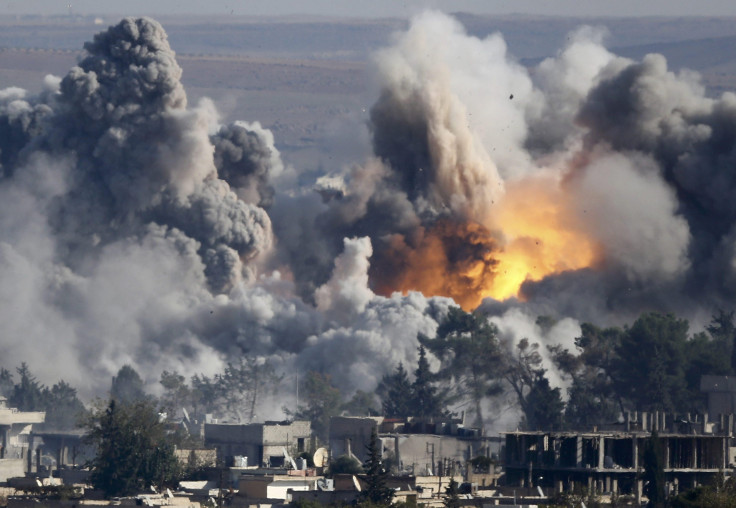US Airstrikes Targeting ISIS Cost Over $1 Billion, Pentagon Says

The cost of U.S. airstrikes on the Islamic State group in Syria and Iraq has exceeded $1 billion, according to multiple media reports citing a Defense Department representative. The U.S.-led coalition targeting the extremist group formerly known as either ISIS or ISIL has carried out 1,371 airstrikes in the two Middle Eastern countries since its operations began last summer, the Pentagon rep confirmed.
“As of Dec. 11, 2014, the total cost of operations related to ISIL since kinetic operations started on August 8, 2014 is $1.02 billion, and the average daily cost is $8.1 million,” Cmdr. Bill Urban said on behalf of the Pentagon. To date, 799 airstrikes have been carried out in Iraq and 572 in Syria, according to the latest statistics. The U.S. has conducted 82 percent of the airstrikes, ABC News reported.
The airstrikes are targeting key locations held by the Islamic State to cripple the group’s strongholds in both Syria and Iraq and degrade their ability to command, control, resupply and train, a U.S. military official told CNN. President Barack Obama in August authorized airstrikes in Iraq, where they reportedly killed three top ISIS leaders in the past month, CBS News reported. ABC News said one of these leaders was a top military commander, but the Pentagon confirmed neither the names and positions of the leaders killed nor their exact number.
“We believe that the loss of these key leaders degrades ISIL’s ability to command and control current operations against Iraqi Security Forces (ISF), including Kurdish and other local forces in Iraq,” a Pentagon representative, Rear Adm. John Kirby, said in a statement Thursday. “Leadership, command and control nodes, facilities, and equipment are always part of our targeting calculus.”
As of October, the U.S. had spent $1.1 billion on all military operations against the Islamic State since mid-June, with more than $60 million of that amount spent on Navy munitions. The cost significantly increased with the additional airstrikes in Iraq.
Obama had sent 1,600 ground troops to Iraq as of October to assist the Iraqi and Kurdish forces in the fight against ISIS, according to Defense News. But top U.S. military leaders have told the president more U.S. on-the-ground forces were needed to stop ISIS from seizing large swaths of the Middle Eastern country. “If we don’t put boots on the ground, we can’t form the coalition, we can’t retake ground that needs to be taken and held,” House of Representatives Armed Services Committee Chairman Buck McKeon told Defense News.
Obama has maintained that U.S. troops “do not and will not have a combat mission” in Iraq against the Islamic State group in the Middle East. The U.S. House approved Obama’s request to train and arm Syrian rebels to fight the militants, CNN reported. However, Americans did not believe Obama’s strategy to “degrade and destroy” the terrorist group would succeed without deploying more U.S. troops, according to a poll conducted by NBC News and the Wall Street Journal in October.
© Copyright IBTimes 2025. All rights reserved.





















